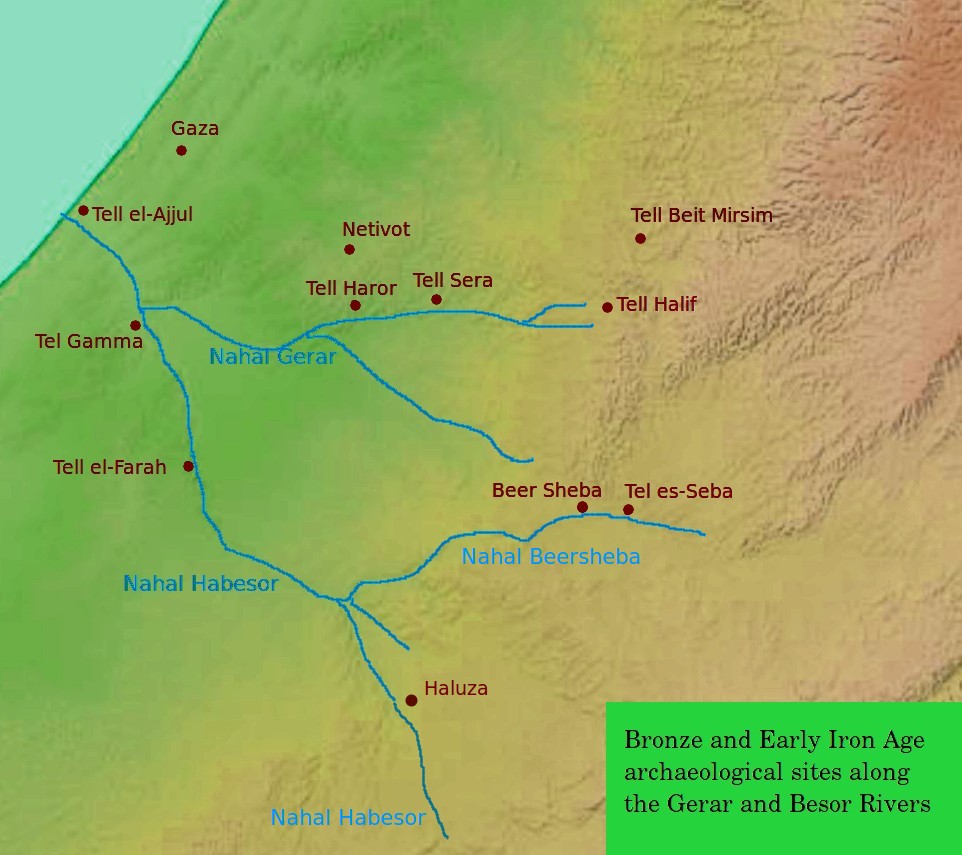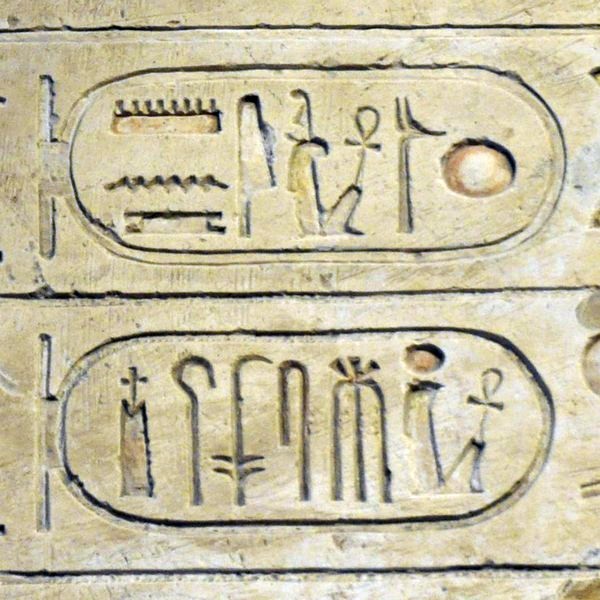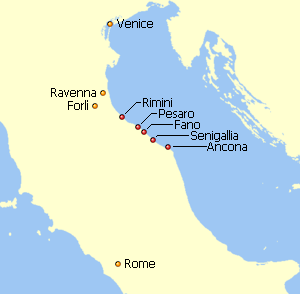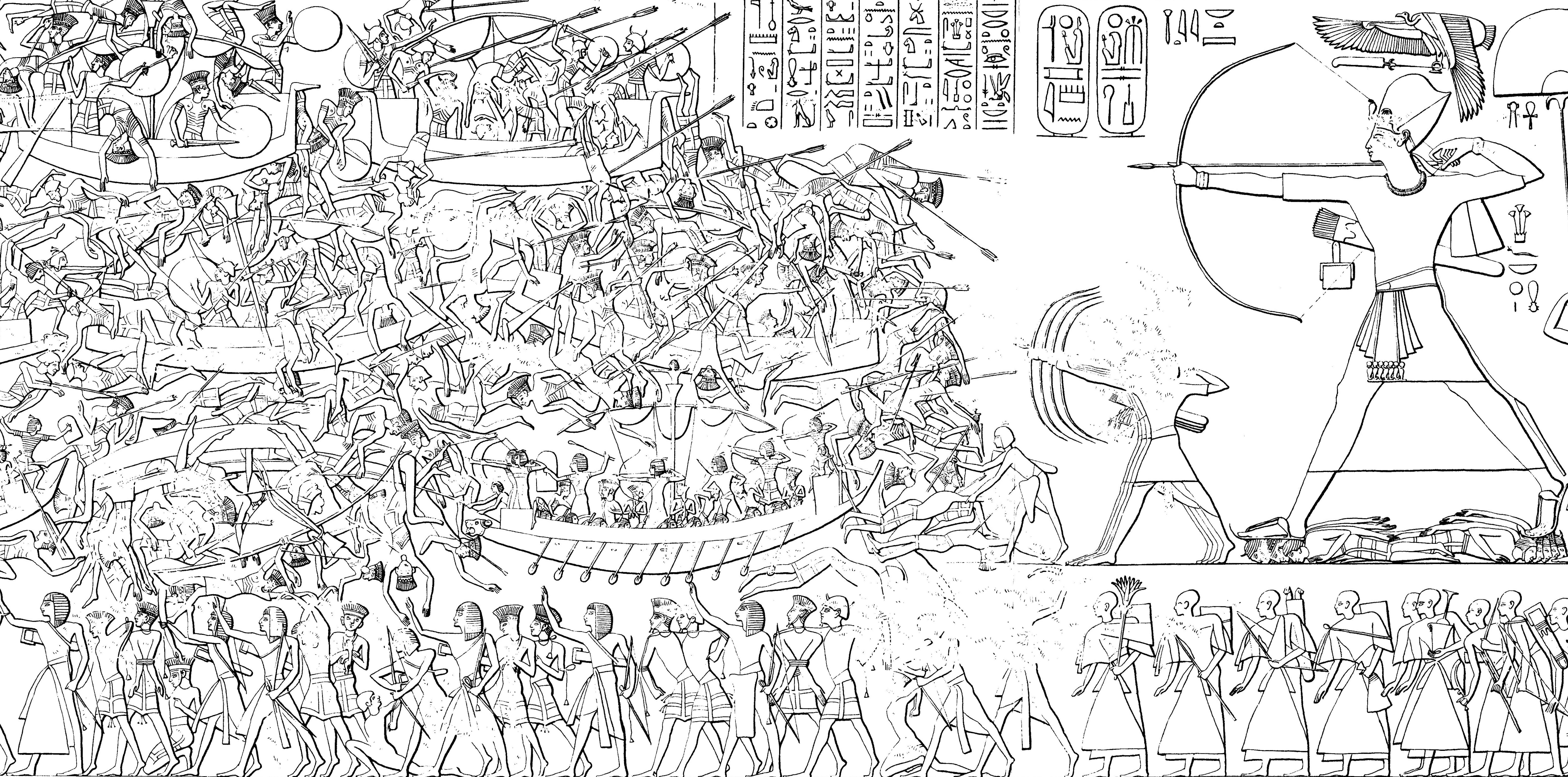|
Philistia
Philistia was a confederation of five main cities or pentapolis in the Southwest Levant, made up of principally Gaza, Ashkelon, Ashdod, Ekron, Gath, and for a time, Jaffa (part of present-day Tel Aviv-Yafo). Scholars believe the Philistines were made up of people of an Aegean background that from roughly 1200 BC onwards settled in the area and mixed with the local Canaanite population, and came to be known as '' Peleset'', or Philistines. At its maximum territorial expansion, its territory may have stretched along the Canaanite coast from Arish in the Sinai (today's Egypt) to the Yarkon River (today's Tel Aviv), and as far inland as Ekron and Gath. Nebuchadnezzar II invaded Philistia in 604 BC, burned Ashkelon, and incorporated the territory into the Neo-Babylonian Empire; Philistia and its native population the Philistines disappear from the historic record after that year. History Ancient Egyptian hieroglyphic records from the New Kingdom period record a group of ... [...More Info...] [...Related Items...] OR: [Wikipedia] [Google] [Baidu] |
Philistines
Philistines (; LXX: ; ) were ancient people who lived on the south coast of Canaan during the Iron Age in a confederation of city-states generally referred to as Philistia. There is compelling evidence to suggest that the Philistines originated from a Greek immigrant group from the Aegean. The immigrant group settled in Canaan around 1175 BC, during the Late Bronze Age collapse. Over time, they intermixed with the indigenous Canaanite societies and assimilated elements from them, while preserving their own unique culture. In 604 BC, the Philistines, who had been under the rule of the Neo-Assyrian Empire (911–605 BC), were ultimately vanquished by King Nebuchadnezzar II of the Neo-Babylonian Empire. Much like the kingdoms of Israel and Judah, the Philistines lost their autonomy by the end of the Iron Age, becoming vassals to the Assyrians, Egyptians, and later Babylonians. Historical sources suggest that Nebuchadnezzar II destroyed Ashkelon and Ekron due to the Phil ... [...More Info...] [...Related Items...] OR: [Wikipedia] [Google] [Baidu] |
Philistine Language
The Philistine language () is the extinct language of the Philistines. Very little is known about the language, of which a handful of words survived as cultural loanwords in Biblical Hebrew, describing specifically Philistine institutions, like the ''seranim'', the "lords" of the Philistine five cities ("pentapolis"), or the ''argáz'' receptacle, which occurs in 1 Samuel 6 and nowhere else, or the title ''padî''. Classification To judge from inscriptions alone, it could appear that the Philistine language is simply part of the local Canaanite dialect continuum which includes Hebrew, Edomite, Moabite, and Phoenician. For instance, the Ekron inscription, identifying the archaeological site securely as the Biblical Ekron, is the first connected body of text to be identified as Philistine, on the basis of its location. However, it is written in a Canaanite dialect similar to Phoenician and Hebrew. There is not enough information about the original language of the Philistine ... [...More Info...] [...Related Items...] OR: [Wikipedia] [Google] [Baidu] |
Gath (city)
Gath or Gat (; , Philistine language, Philistine: 𐤂𐤕 *''Gīt'') was one of the five cities of the Philistine pentapolis during the Iron Age. It was located in northeastern Philistia, close to the border with Kingdom of Judah, Judah. Gath is often mentioned in the Hebrew Bible and its existence is confirmed by Egyptian inscriptions. Already of significance during the Bronze Age, the city is believed to be mentioned in the El-Amarna letters as Gimti/Gintu, ruled by the two Šuwardata, Shuwardata and 'Abdi-Ashtarti. Another Gath, known as Ginti-kirmil (Gath of Carmel) also appears in the Amarna letters. The site most favored as the location of Gath is the archaeological mound or Tell (archaeology), tell known as Tell es-Safi in Arabic and Tel Zafit in Hebrew (sometimes written Tel Tzafit), located inside Tel Zafit National parks and nature reserves of Israel, National Park, but a stone inscription disclosing the name of the city has yet to be discovered. A Gittite is a person fr ... [...More Info...] [...Related Items...] OR: [Wikipedia] [Google] [Baidu] |
Ekron
Ekron (Philistine: 𐤏𐤒𐤓𐤍 ''*ʿAqārān'', , ), in the Hellenistic period known as Accaron () was at first a Canaanite, and later more famously a Philistine city, one of the five cities of the Philistine Pentapolis, located in present-day Israel. In 1957, Ekron was first identified with the mound of Khirbet el-Muqanna (Arabic) or Tel Miqne (Hebrew), near the depopulated Palestinian village of 'Aqir, on the basis of the large size of the Iron Age archaeological remains; the judgement was strengthened by the discovery in 1996 of the Ekron inscription. The tell lies west of Jerusalem, and north of Tel es-Safi, the almost certain site of the Philistine city of Gath, on the grounds of Kibbutz Revadim on the eastern edge of the Israeli coastal plain. The other main cities of the Philistine Pentapolis beyond Ekron and Gath were Gaza, Ashkelon, and Ashdod. In the Bible In the Hebrew Bible, Ekron is mentioned initially in : :''This is the land that still remai ... [...More Info...] [...Related Items...] OR: [Wikipedia] [Google] [Baidu] |
Ascalon
Ascalon or Ashkelon was an ancient Near East port city on the Mediterranean coast of the southern Levant of high historical and archaeological significance. Its remains are located in the archaeological site of Tel Ashkelon, within the city limits of the modern Israeli city of Ashkelon. Traces of settlement exist from the 3rd millennium BCE, with evidence of city fortifications emerging in the Middle Bronze Age. During the Late Bronze Age, it was integrated into the New Kingdom of Egypt, Egyptian Empire, before becoming one of the five cities of the Philistia, Philistine pentapolis following the migration of the Sea Peoples. The city was later destroyed by the Neo-Babylonian Empire, Babylonians but was subsequently rebuilt. Ascalon remained a major metropolis throughout the classical period, as a Hellenistic period, Hellenistic city persisting into the Roman Empire, Roman period. Christianity began to spread in the city as early as the 4th century CE. During the Middle Ages it ca ... [...More Info...] [...Related Items...] OR: [Wikipedia] [Google] [Baidu] |
Canaanite People
CanaanThe current scholarly edition of the Septuagint, Greek Old Testament spells the word without any accents, cf. Septuaginta : id est Vetus Testamentum graece iuxta LXX interprets. 2. ed. / recogn. et emendavit Robert Hanhart. Stuttgart : Dt. Bibelges., 2006 . However, in modern Greek, the accentuation is , while the Novum Testamentum Graece, current (28th) scholarly edition of the New Testament has . was an Ancient Semitic-speaking peoples, ancient Semitic-speaking civilization and region of the Southern Levant during the late 2nd millennium BC. Canaan had significant geopolitical importance in the Late Bronze Age Amarna Period (14th century BC) as the area where the sphere of influence, spheres of interest of the Egyptian Empire, Egyptian, Hittites, Hittite, Mitanni, and Assyrian Empires converged or overlapped. Much of present-day knowledge about Canaan stems from Excavation (archaeology), archaeological excavation in this area at sites such as Tel Hazor, Tel Megiddo, ... [...More Info...] [...Related Items...] OR: [Wikipedia] [Google] [Baidu] |
Ashdod (ancient City)
Ashdod (Philistine language, Philistine: 𐤀𐤔𐤃𐤃 *''ʾašdūd''; ; ) or Azotus () was an ancient Levantine metropolis, the remains of which are situated at Tel Ashdod, an archaeological site located a few kilometers south of the modern Ashdod in present-day Israel. The first documented urban settlement at Ashdod dates to the 17th century BCE, when it was a fortified Canaanite city, before being destroyed in the Bronze Age Collapse. During the Timeline of Palestine region#Iron Age, Iron Age, it was one of the five cities of the Philistine pentapolis, and is mentioned 13 times in the Hebrew Bible. After being captured by Uzziah, it was briefly ruled by the Kingdom of Judah before changing hands between the Neo-Assyrian Empire, the Neo-Babylonian Empire and the later Achaemenid Empire. Following the conquests of Alexander the Great, the city became Hellenization, Hellenized, and was known as Azotus. It was later incorporated into the Hasmonean kingdom. In the 1st century BC ... [...More Info...] [...Related Items...] OR: [Wikipedia] [Google] [Baidu] |
Gaza City
Gaza City, also called Gaza, is a city in the Gaza Strip, Palestine, and the capital of the Gaza Governorate. Located on the Mediterranean coast, southwest of Jerusalem, it was home to Port of Gaza, Palestine's only port. With a population of 590,481 people as of 2017, Gaza City was the most populous city in Palestine until the Gaza war caused most of the population to be displaced. Inhabited since at least the 15th century BC, Gaza City has been dominated by different peoples and empires throughout its history. The Philistines made it a part of their Philistia, pentapolis after the ancient Egyptians had ruled it for nearly 350 years. Under the Roman Empire, Gaza City experienced relative peace and its Port of Gaza, Mediterranean port flourished. In 635 AD, it became the first city in the Palestine (region), Palestine region to be conquered by the Rashidun army and quickly developed into a centre of Fiqh, Islamic law. However, by the time the Crusader states were established in ... [...More Info...] [...Related Items...] OR: [Wikipedia] [Google] [Baidu] |
New Kingdom Of Egypt
The New Kingdom, also called the Egyptian Empire, refers to ancient Egypt between the 16th century BC and the 11th century BC. This period of History of ancient Egypt, ancient Egyptian history covers the Eighteenth Dynasty of Egypt, Eighteenth, Nineteenth Dynasty of Egypt, Nineteenth, and Twentieth Dynasty of Egypt, Twentieth dynasties. Through radiocarbon dating, the establishment of the New Kingdom has been placed between 1570 and 1544 BC. The New Kingdom followed the Second Intermediate Period of Egypt, Second Intermediate Period and was succeeded by the Third Intermediate Period of Egypt, Third Intermediate Period. It was the most prosperous time for the Egyptians#History, Egyptian people and marked the peak of Egypt's power. In 1845, the concept of a "New Kingdom" as Periodization of ancient Egypt, one of three "golden ages" was coined by German scholar Christian Charles Josias von Bunsen; the original definition would evolve significantly throughout the 19th and 20th ... [...More Info...] [...Related Items...] OR: [Wikipedia] [Google] [Baidu] |
Ramesses III
Usermaatre Meryamun Ramesses III was the second Pharaoh of the Twentieth dynasty of Egypt, Twentieth Dynasty in Ancient Egypt. Some scholars date his reign from 26 March 1186 to 15 April 1155 BC, and he is considered the last pharaoh of the New Kingdom of Egypt, New Kingdom to have wielded substantial power. His long reign saw the decline of Egyptian political and economic power, linked to a series of invasions and internal economic problems that also plagued pharaohs before him. This coincided with a decline in the cultural sphere of Ancient Egypt. However, his successful defense was able to slow down the decline, although it still meant that his successors would have a weaker military. He has also been described as a "warrior Pharaoh" due to his strong military strategies. He led the way by defeating the invaders known as "the Sea Peoples", who had caused destruction in other civilizations and empires. He was able to save Egypt from collapsing at the time when Late Bronze Age c ... [...More Info...] [...Related Items...] OR: [Wikipedia] [Google] [Baidu] |
Pentapolis
A pentapolis (from Ancient Greek, Greek ''penta-'', 'five' and ''polis'', 'city') is a geographic and/or institutional grouping of five cities. Cities in the ancient world probably formed such groups for political, commercial and military reasons, as happened later with the Cinque Ports in England. Significant historical cases * The Philistine Pentapolis: Gaza City, Gaza, Ashdod (ancient city), Ashdod, Ascalon, Ashkelon, Ekron, and Gath (city), Gath, all combined to make Philistia. * In the biblical Holy Land, describes the region where five cities—Sodom and Gomorrah, Sodom, Sodom and Gomorrah, Gomorrah, Zoara, Admah and Zeboim (Hebrew Bible), Zeboim—united to resist the invasion of Chedorlaomer, and of which four were shortly after destroyed. * The Doric—or Dorian Pentapolis: Kos, on the island of the same name in the Aegean Sea; Knidos, in Caria on the west coast of Asia Minor; Lindus, Ialysus and Camirus, all three on Rhodes. * The Phrygian Pentapolis: Eukarpia, Hier ... [...More Info...] [...Related Items...] OR: [Wikipedia] [Google] [Baidu] |
Sea Peoples
The Sea Peoples were a group of tribes hypothesized to have attacked Ancient Egypt, Egypt and other Eastern Mediterranean regions around 1200 BC during the Late Bronze Age. The hypothesis was proposed by the 19th-century Egyptology, Egyptologists Emmanuel de Rougé and Gaston Maspero, on the basis of primary sources such as the reliefs on the Mortuary Temple of Ramesses III at Medinet Habu (temple), Medinet Habu. Subsequent research developed the hypothesis further, attempting to link these sources to other Late Bronze Age evidence of migration, piracy, and destruction. While initial versions of the hypothesis regarded the Sea Peoples as a primary cause of the Late Bronze Age collapse, more recent versions generally regard them as a symptom of events which were already in motion before their purported attacks. The Sea Peoples included well-attested groups such as the Lukka, as well as others such as the Weshesh whose origins are unknown. Hypotheses regarding the origin of the va ... [...More Info...] [...Related Items...] OR: [Wikipedia] [Google] [Baidu] |











